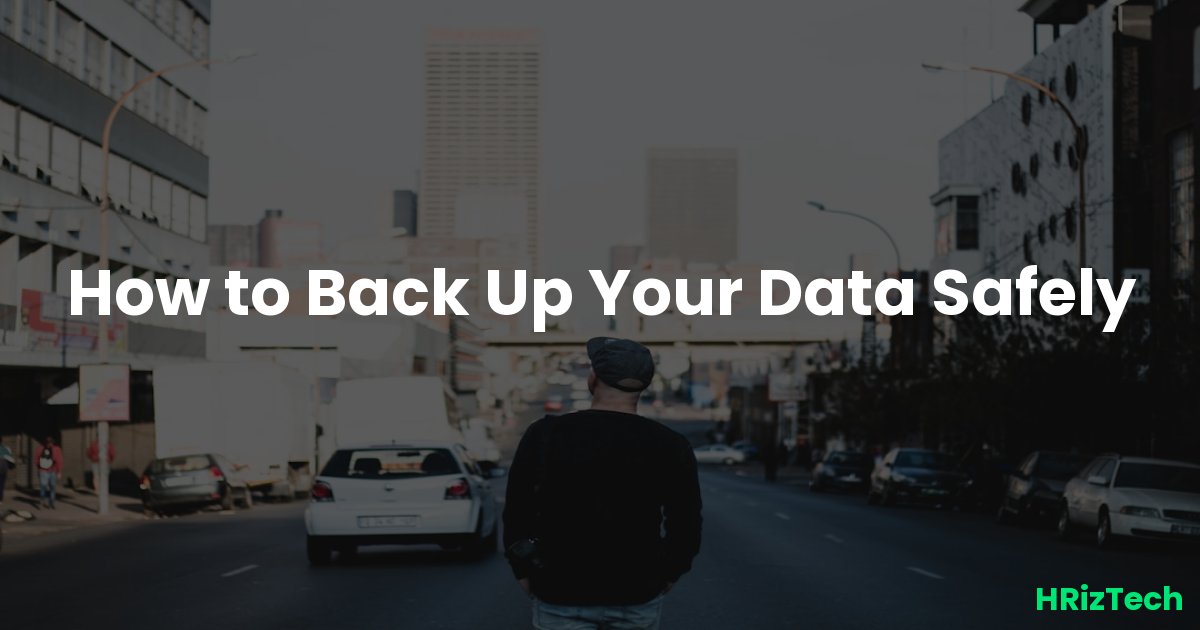How to Back Up Your Data Safely

How to Back Up Your Data Safely
Ever had that sinking feeling when you accidentally deleted a crucial file? Or worse, your computer crashed, and everything was gone? Learning how to back up your data safely isn't just a good idea; it's essential in today's digital world. This guide will walk you through simple, effective methods to protect your valuable information.
Why is Data Backup So Important?
In today’s hyper-connected world, data is everything. From personal photos to work documents, your digital life holds immense value. A single hard drive failure, a ransomware attack (a growing concern in 2025, according to a recent Cybersecurity Ventures report), or even a simple accidental deletion can wipe out years of memories and work. How to back up your data safely is a question everyone should know the answer to.
The Consequences of Data Loss
The consequences of data loss extend far beyond inconvenience. Losing critical business data can cripple a company. For individuals, it can mean losing irreplaceable photos, financial records, or important projects. Regular backups are your insurance policy against this devastating possibility.
How to Choose the Right Backup Method
There’s no one-size-fits-all solution. The best backup strategy depends on your needs, budget, and tech comfort level. Let's explore some popular options.
1. Cloud Storage: The Convenient Choice
Services like Google Drive, Dropbox, iCloud, and OneDrive offer easy-to-use cloud storage. They automatically back up your files and are accessible from anywhere with an internet connection. However, remember to check their security features and storage limits.
2. External Hard Drives: The Reliable Option
External hard drives provide a physical backup of your data. They're relatively inexpensive and offer large storage capacities. Remember the 3-2-1 backup rule: 3 copies of your data, on 2 different media types, with 1 copy offsite. This ensures redundancy even if one drive fails. This is a crucial element of how to back up your data safely.
3. Network Attached Storage (NAS): The Advanced Solution
For those with more technical skills and a large amount of data, a NAS device offers a centralized storage solution. These devices connect to your home network, allowing multiple computers and devices to access and back up data. They often offer advanced features like RAID for data redundancy.
4. Hybrid Approach: Combining Methods
For maximum protection, consider combining methods. For example, back up your most important files to the cloud and use an external hard drive for a less frequently accessed data. This provides multiple layers of protection against data loss, a key component of how to back up your data safely.
What are the Best Practices for Data Backup?
Choosing the right method is only half the battle. Following best practices ensures your backups are effective and reliable.
Regular Backups are Key
Don't wait until disaster strikes! Schedule regular backups. How often depends on how frequently your data changes. Daily backups are ideal for frequently updated files, while weekly backups might suffice for less active data.
Test Your Backups!
The worst time to discover your backups are corrupted or incomplete is when you need them. Regularly test your backups by restoring a few files to ensure everything works as expected.
Secure Your Backups
Protect your backups with strong passwords and encryption, especially for cloud storage and external drives. This is vital in the face of increasing cybersecurity threats predicted for 2025.
- Choose a strong password (a mix of upper and lowercase letters, numbers, and symbols).
- Enable two-factor authentication (2FA) where available.
- Consider using encryption software for added security.
How Often Should I Back Up My Data?
This depends on how much your data changes. For frequently updated files (like work documents), daily or even hourly backups might be necessary. For less frequently changing data (like photos), weekly or monthly backups might be sufficient. The key is to establish a consistent routine and stick to it. This is a critical aspect of how to back up your data safely.
Conclusion: Mastering How to Back Up Your Data Safely
Protecting your valuable data is crucial in 2024 and beyond. By understanding different backup methods and following best practices, you can significantly reduce the risk of data loss. Remember, your peace of mind is worth the effort. How to back up your data safely is a skill you'll always appreciate.
What are your favorite methods for data backup? What other safety measures do you take to protect your digital life?
Comments
No comments yet. Be the first to comment!